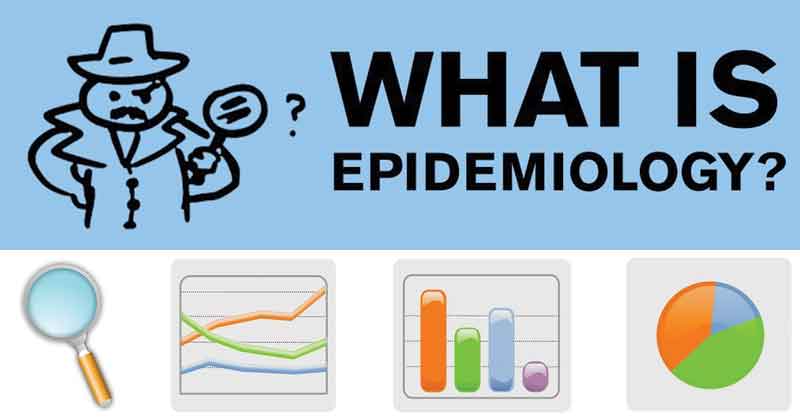Epidemiology, as defined by Last, is “the study of the distribution and determinants of health-related states or events in specified populations, and the application of this study to the prevention and control of health problems”.
- Epidemiologists are concerned not only with death, illness, and disability, but also with more positive health status and, most importantly, with the means to improve health.
- The term “disease” encompasses all unfavorable health changes, including injuries and mental health.
- In simple terms, epidemiology is the study of how the disease is distributed in populations and the factors that influence or determine this distribution.

History of Epidemiology
- Epidemiology originates from Hippocrates’ observation more than 2000 years ago that environmental factors influence the occurrence of disease.
- However, it was not until the nineteenth century that the distribution of disease in specific human population groups was measured to any large extent.
- This work marked not only the formal beginnings of epidemiology but also some of its most spectacular achievements.
- The finding by John Snow that the risk of cholera in London was related to the drinking of water supplied by a particular company provides a well-known example. Snow’s epidemiological studies were one aspect of a wide-ranging series of investigations that examined related physical, chemical, biological, sociological and political processes.
- Comparing rates of disease in subgroups of the human population became common practice in the late nineteenth and early twentieth centuries.
- This approach was initially applied to the control of communicable diseases but proved to be a useful way of linking environmental conditions or agents to specific diseases.
- In the second half of the twentieth century, these methods were applied to chronic non-communicable diseases such as heart disease and cancer, especially in middle and high-income countries.
- Epidemiology in its modern form is a relatively new discipline1 and uses quantitative methods to study diseases in human populations to inform prevention and control efforts.
Modern Epidemiology
Modern epidemiology accommodates multiple exposures contributing to increased risk for one disease (many-to-one) and situations where one risk factor contributes to multiple diseases (one-to-many).
Objectives of Epidemiology
- to identify the etiology, or cause, of a disease and its relevant risk factors (i.e., factors that increase a person’s risk for a disease).
- to intervene to reduce morbidity and mortality from the disease
- to develop a rational basis for prevention programs based on identified etiologic or causal factors
- to work on to reduce or eliminate exposure to those factors
- to develop appropriate vaccines and treatments, which can prevent the transmission of the disease to others.
- to determine the extent of disease found in the community.
- to help plan health services and facilities for effective health care facilities
- to study the natural history and prognosis of the disease.
- to define the baseline natural history of a disease in quantitative terms so that as we develop new modes of intervention, either through treatments or through new ways of preventing complications
- to help compare the results of using new modalities with the baseline data to determine whether new approaches have truly been effective.
- to evaluate both existing and newly developed preventive and therapeutic measures and modes of health care delivery
- to help provide the foundation for developing public policy relating to environmental problems, genetic issues, and other social and behavioral considerations regarding disease prevention and health promotion.
Types of Epidemiology
Descriptive epidemiology:
- Examining the distribution of disease in a population, and observing the basic features of its distribution
Analytic epidemiology:
- Investigating a hypothesis about the cause of disease by studying how exposures relate to disease
References
- Park, K. (n.d.). Park’s textbook of preventive and social medicine.
- Beaglehole, Robert, Bonita, Ruth, Kjellström, Tord & World Health Organization. (1993). Basic epidemiology, Updated reprint. World Health Organization.
- Gordis, L. (2014). Epidemiology (Fifth edition.). Philadelphia, PA: Elsevier Saunders.
- Hennekens CH, Buring JE. Epidemiology in Medicine, Lippincott Williams & Wilkins, 1987.
- White, F., Stallones, L., & Last, J. M. (2013). Global public health: Ecological foundations. New York, NY: Oxford University Press.
- http://www.personal.soton.ac.uk/dab1f10/Lectures_all_cesme2011.pdf
- https://newonlinecourses.science.psu.edu/stat507/node/26/
- https://ajph.aphapublications.org/doi/pdf/10.2105/AJPH.86.5.630
- http://www.nwcphp.org/docs/si/epi/Study_Types_8_12.pdf

I really interest to read
It’s really interesting to read it writing I’m doing my masters in preventive veterinary medicine.